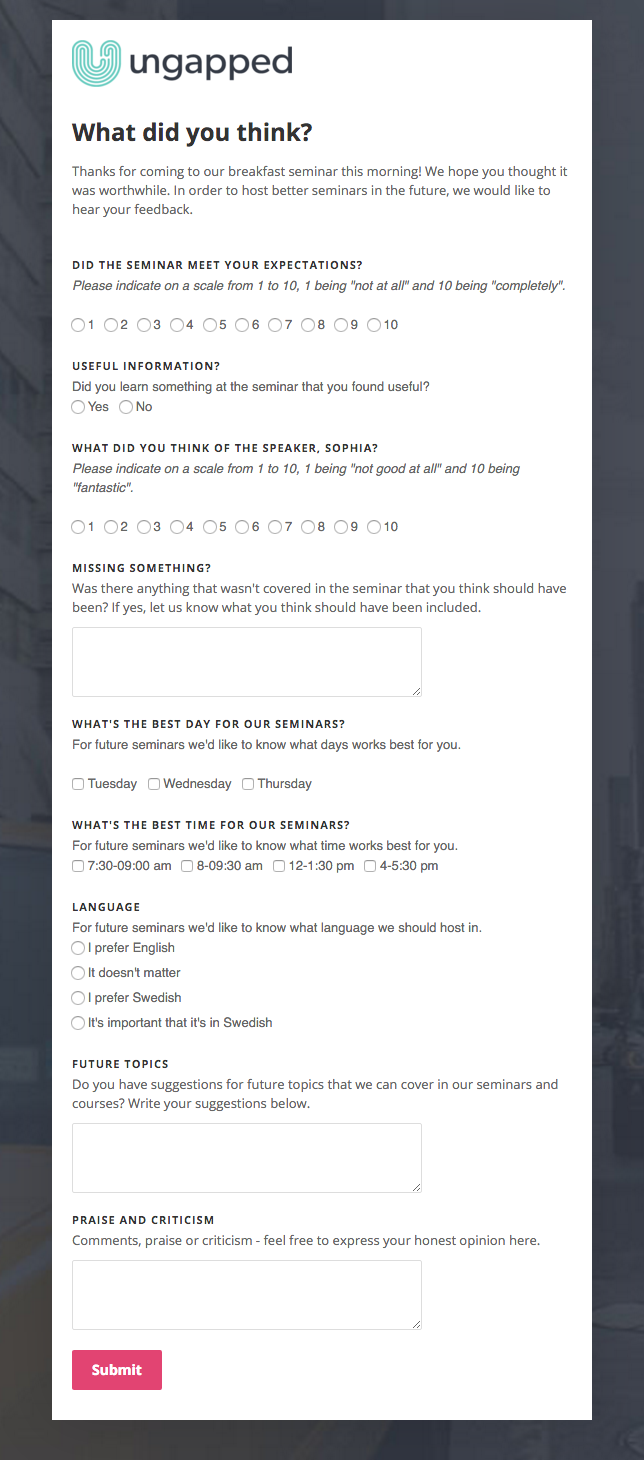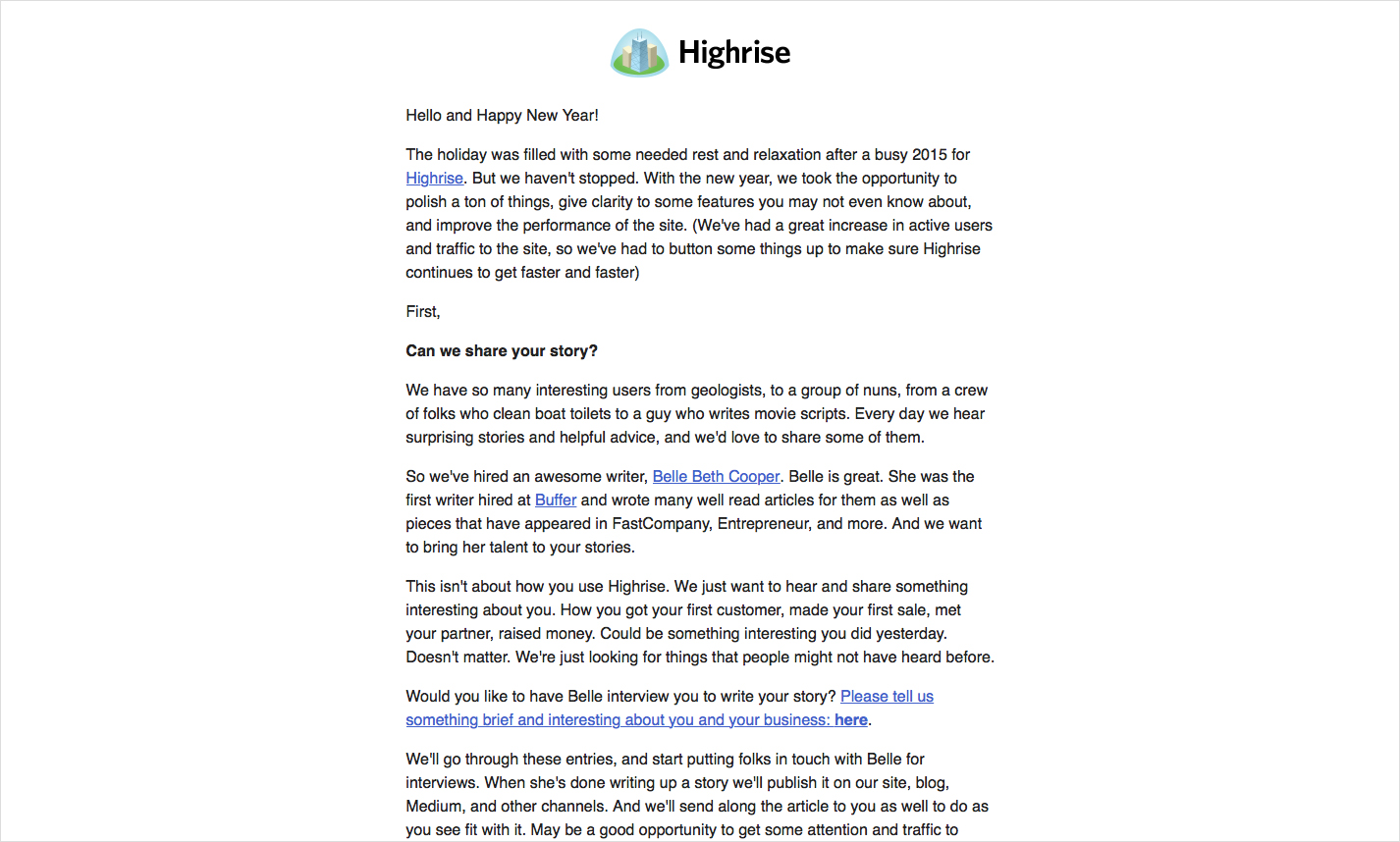How to Seek Customer Feedback with Surveys
What's the best way to seek customer feedback through surveys? Is it creating the right questions? Is it choosing the right audience? Is it offering rewards for participation? Well the answer is actually a little bit of each. Let's walk through the basics.

Make sure your survey is targeted
When people are writing up their customer feedback surveys, it's a common mistake to write down every possible question related to your business. Spoiler: this does not work. Seeing a lengthy and overly comprehensive survey will only make customers shy away from answering your survey.
So start by narrowing down what it is you want to know from your customers. Are you looking for a review on a particular product or service? Are you looking to know what people think of your customer service? Or maybe you want to know what people thought of a recent event you hosted. Whatever it is, narrow it down and build your questions based on that sole query.
Ask your customers the right questions
The questions that you will use in customer feedback surveys have the power to influence the answers your customers will give - regardless of whether that's good or bad for your business. That's why it's mission critical to understand the difference between question types and your influence on each.
Using closed questions
Many people are under the assumption that closed questions are those that can be answered with a simple "yes" or "no". To some extent this is true but it's not the whole picture. Closed questions are questions that can be answered with a single word or a short phrase. "Yes" and "no" fall under this umbrella but so do answers such as "30 years old", "3 years ago", and "blue".
The advantage of using closed questions when you seek customer feedback is that they:
- Give you facts
- Are easy to answer
- Are quick to answer
- Give control of the conversation to the questioner
The first three are all aspects that we should seek to include in most of our customer feedback surveys. The last one is a bit more tricky to manage simply because it's not always a good thing to give control to the questioner as this creates a risk for bias. If surveys are biased not only do we limit the amount and kind of feedback we get back from customers but it also makes any feedback they give us invalid.
To avoid creating bias, try to use closed questions where you do not want a user's thoughts, feelings, opinions or ideas as feedback. For example; first/last name, age, geographical locations, job title or company name.
Using open questions
In contrast, open questions deliberately seek longer answers, and are the opposite of closed questions. The advantage of using closed questions when you seek customer feedback is that they:
- Take longer to complete than closed questions
- Ask the respondent to think and reflect
- Give you opinions and feelings
- Give control of the conversation to the respondent

- Use a mixture of both closed and open questions. Source: Ungapped
Keep it nice and short
Of all the surveys you have ever filled out in your life, how many of them do you remember actually filling out? You can probably count them on one hand. And how many of them were enjoyable to fill out? Probably none. Because let's face it, filling out surveys is not really the most mentally stimulating activity.
Around 5 (open) questions should give you the kind of information you're after. Anything over 10 is too extensive and is likely tackling questions that aren't based on your initial targeted query (see first point in this post).
Offer a reward or benefit for participating
If you are seeking feedback without offering some kind of reward or benefit, you'll likely experience less than overwhelming response rates. Why? People love free stuff. People also hate doing things when they see no reward for them.
Now, when we say offer a reward or benefit for participating that doesn't have to mean a giving away a tangible 'freebie' item. Some of the best customer feedback surveys I have seen have come from companies that offer intangible things in exchange for my feedback. For example; a free webinar, one hour free consulting or a guest pass for an upcoming event. Whatever it is that you can offer customers for participating, state it nice and clear so people know even before answering the first question.

- One of my favorite examples comes form Highrise who in turn for getting customer feedback would share their customers' stories on their blog. Source: Highrise
Looking for more tips to improve your surveys?
Check out: Survey design 101: Easy ways to improve your survey